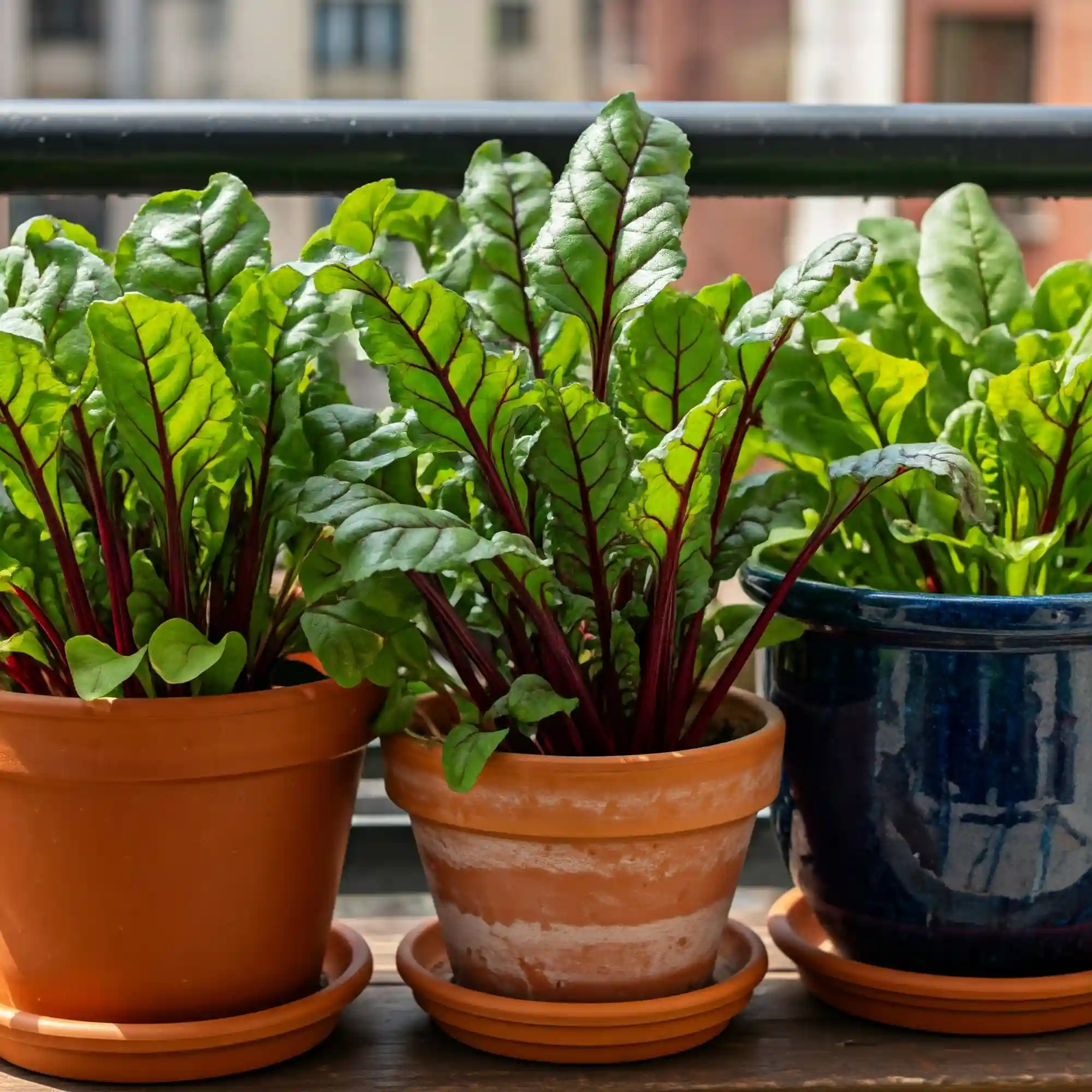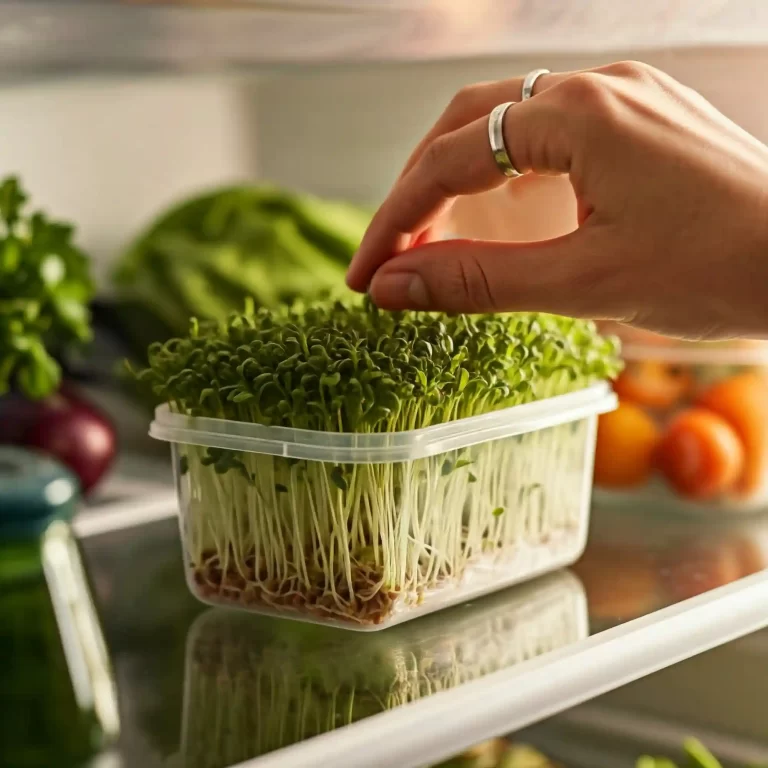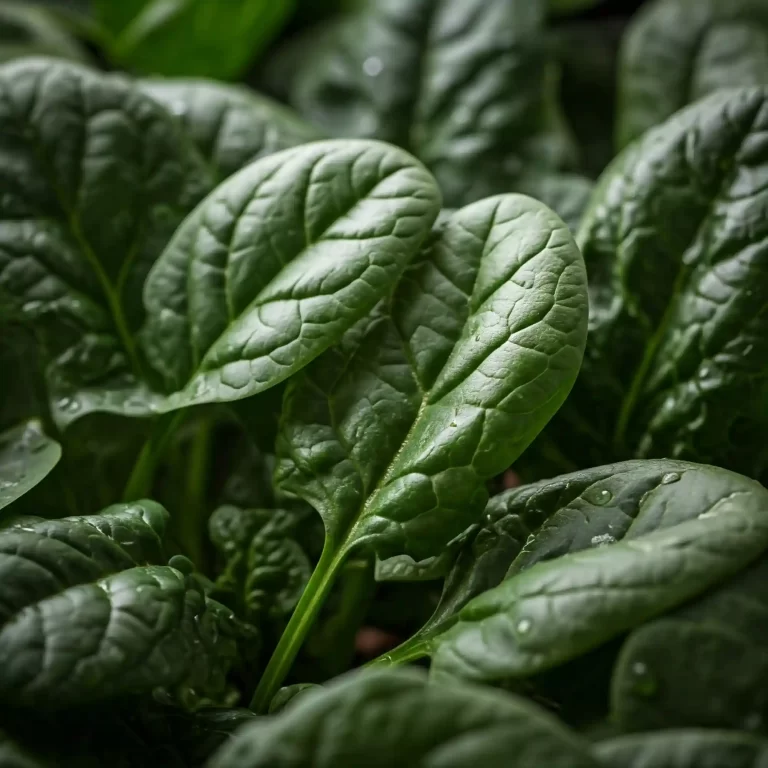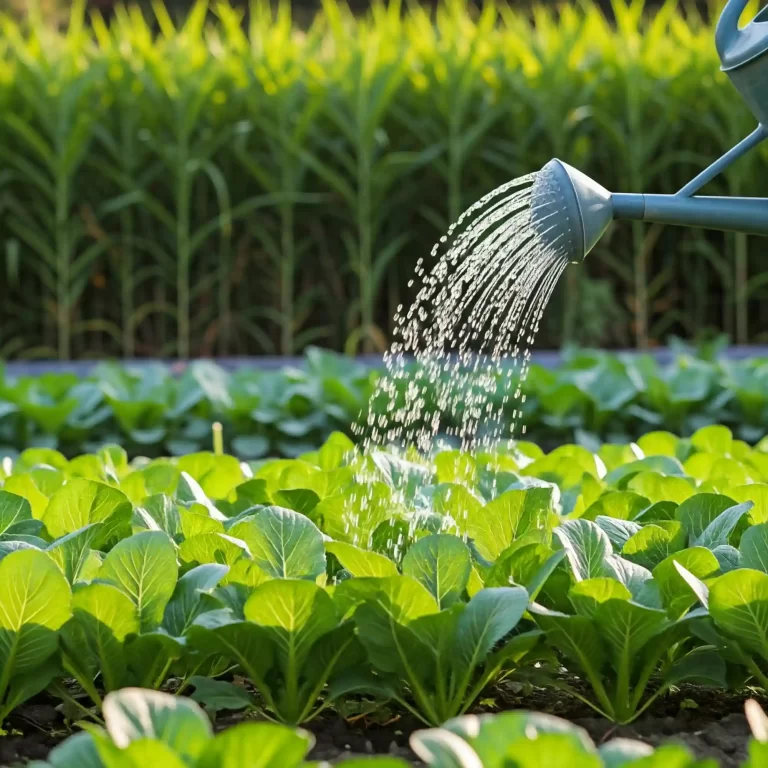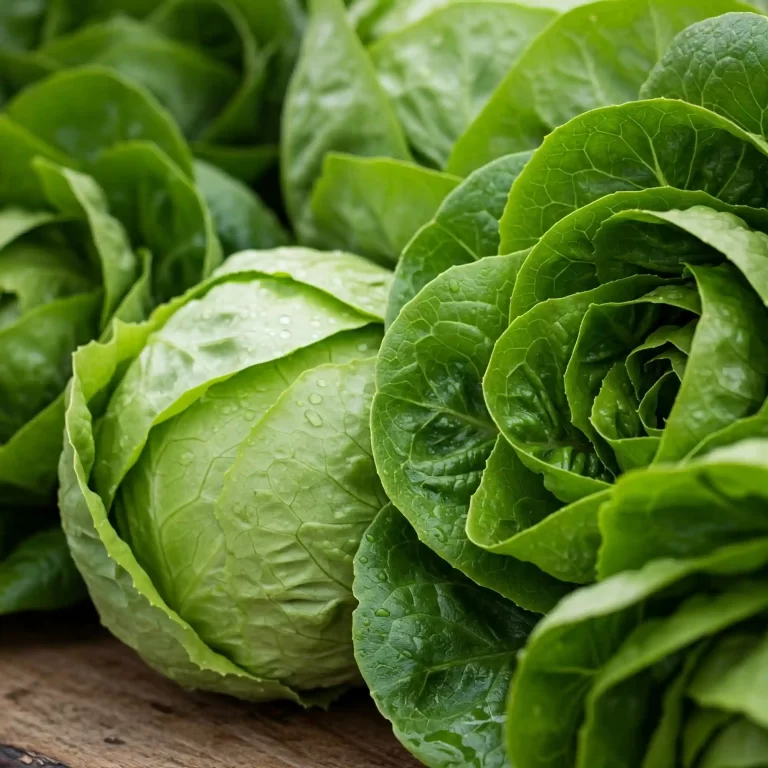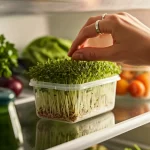How to Grow Beet Greens Vegetable: A Beginner’s Guide
Are you tired of bland salads and store-bought greens that lack that fresh, vibrant taste? Do you dream of stepping out into your own backyard and harvesting crisp, nutritious greens for your meals? I understand that feeling; there’s nothing quite like the satisfaction of growing your own food. Many people find the idea of starting a garden daunting, especially when it comes to vegetables. You might think it requires vast amounts of space, time, or expertise. But what if I told you that growing your own delicious beet greens is surprisingly simple, even if you’re a complete beginner? I’m here to tell you that it’s absolutely achievable, and in this guide, I’ll walk you through every step of the process, from choosing the right seeds to enjoying your first homegrown harvest. You’ll discover how easy it is to add fresh, healthy beet greens to your diet, straight from your garden.
Choosing the Right Beet Greens Variety
Choosing the right beet variety is the first step to a successful beet greens harvest. Just like with any other vegetable, different varieties offer unique characteristics in terms of flavor, texture, growth rate, and disease resistance. I’ve found that starting with the right variety can significantly impact your gardening experience, especially if you’re new to growing beet greens. You might be surprised to learn that there are several types of beets specifically cultivated for their luscious greens.
Popular Beet Varieties for Greens:
- ‘Lutz Green Leaf’: This heirloom variety is known for its large, vigorous green tops and sweet, tender roots. It’s a reliable choice for both greens and beets. I appreciate this variety for its resilience, it performs well even under less-than-perfect conditions.
- ‘Red Ace’: This hybrid variety is a popular choice for its uniform, deep red roots and dark green tops. The greens have a mild flavor and are perfect for salads or cooking. In my experience, ‘Red Ace’ is a fast grower, providing a quick harvest of both greens and roots.
- ‘Early Wonder Tall Top’: As the name suggests, this variety is known for its tall, abundant green tops, making it an excellent choice for those primarily interested in greens. The roots are also tasty, though they tend to be smaller than other varieties. If you prioritize greens over roots, this is the variety I would recommend.
- ‘Bull’s Blood’: This variety is valued for its striking deep red leaves, which add a beautiful splash of color to any garden or plate. The flavor is slightly more intense than other varieties. I find that this variety is especially attractive in mixed green salads.
- ‘Chioggia: This Italian heirloom is known for its unique red and white striped roots, but its greens are also delicious and tender. You get a visual treat and a tasty harvest with this variety.
Factors to Consider When Choosing a Variety:
- Climate: Some varieties are more heat-tolerant than others. If you live in a hot climate, choose a heat-resistant variety like ‘Lutz Green Leaf.’ If you live in a colder climate, choose a cold-tolerant variety. I have learned over the years that choosing the proper variety for your location is crucial.
- Growing Conditions: Consider your soil type and available sunlight. Some varieties are more adaptable to different conditions. If your soil is heavy clay, I recommend amending it with compost before planting any beet variety.
- Personal Preference: Do you prefer a mild or intense flavor? Do you want large, abundant greens or smaller, more tender leaves? There is a beet variety for every taste.
Seed Quality:
Always purchase seeds from a reputable source. High-quality seeds will have a higher germination rate and be less susceptible to diseases. I always check the seed packet for the “packed for” date to ensure I’m using fresh seeds.
Choosing the right beet variety is crucial for a successful harvest. By considering your climate, growing conditions, and personal preferences, you can select the perfect variety for your garden. I encourage you to experiment with different varieties to discover your favorites.
Preparing the Soil and Planting Beet Greens
Now that you’ve chosen your beet variety, it’s time to prepare the soil and get those seeds in the ground. This is a crucial step, as beet greens, like most vegetables, thrive in specific soil conditions. From my experience, proper soil preparation is the foundation of a healthy and productive garden. You wouldn’t build a house on a weak foundation, and the same principle applies to gardening.
Ideal Soil Conditions for Beet Greens:
Beet greens prefer well-drained, fertile soil with a pH between 6.0 and 7.0. This slightly acidic to neutral pH allows for optimal nutrient uptake. Here’s a breakdown of what that means:
- Well-drained: The soil should allow excess water to drain away, preventing waterlogging, which can lead to root rot. If you have heavy clay soil, amending it with compost or other organic matter is essential.
- Fertile: The soil should be rich in organic matter and essential nutrients. This provides the necessary building blocks for healthy plant growth.
- pH 6.0-7.0: You can test your soil pH using a home testing kit or by sending a sample to your local agricultural extension office. If your soil is too acidic (below 6.0), you can add lime to raise the pH. If it’s too alkaline (above 7.0), you can add sulfur to lower it.
Soil Testing and Amendments:
I highly recommend conducting a soil test before planting. This will give you a clear understanding of your soil’s pH and nutrient levels. Based on the results, you can amend your soil accordingly. Here are some common soil amendments:
- Compost: This is a fantastic all-around soil amendment that improves drainage, water retention, and nutrient content. I add compost to my garden every year.
- Aged Manure: This is another excellent source of organic matter and nutrients. Make sure to use aged manure, as fresh manure can burn plants.
- Other Organic Matter: This includes things like leaf mold, shredded bark, and cover crops.
Planting Beet Seeds:
You can plant beet seeds directly into the garden (direct sowing) or start them indoors and transplant them later. I usually prefer direct sowing, as it’s less work and beet greens transplant well.
- Direct Sowing: Sow seeds about ½ inch deep and 1-2 inches apart in rows. Once seedlings emerge, thin them to 3-4 inches apart. This gives the plants enough space to grow.
- Starting Indoors: Start seeds indoors 4-6 weeks before the last frost. Sow seeds in small pots or trays filled with seed-starting mix. Keep the soil moist and warm. Once seedlings have a few sets of true leaves, you can transplant them into the garden.
Spacing Guidelines:
Proper spacing is essential for healthy beet green growth. If plants are too crowded, they’ll compete for resources and be more susceptible to diseases.
- Between Rows: 12-18 inches
- Between Plants: 3-4 inches after thinning
Best Time to Plant:
The best time to plant beet greens is in the spring or fall, when temperatures are cool. In most areas, you can plant beet greens as soon as the soil can be worked in the spring. You can also plant them in the fall for a winter or early spring harvest in milder climates. I’ve found that succession planting (planting seeds every few weeks) ensures a continuous harvest of fresh greens throughout the growing season.
By following these guidelines for soil preparation and planting, you’ll give your beet greens a strong start and set yourself up for a bountiful harvest.
Caring for Your Growing Beet Greens
Once your beet seeds have germinated and the seedlings have emerged, it’s time to focus on their ongoing care. This involves providing them with the right amount of water, sunlight, and nutrients, as well as protecting them from weeds and pests. I’ve learned that consistent care is key to maximizing your beet green harvest. A little attention each week can make a big difference in the health and productivity of your plants.
Watering Needs:
Beet greens need consistent moisture to thrive, but they don’t like to be waterlogged. Overwatering can lead to root rot, while underwatering can cause the leaves to wilt and become tough. Here are some watering tips:
- Water deeply and regularly: Water deeply when the top inch of soil feels dry to the touch. This encourages deep root growth.
- Water at the base of the plants: Avoid wetting the leaves, as this can promote fungal diseases.
- Water in the morning: This allows the leaves to dry before nightfall, reducing the risk of disease.
- Use a soaker hose or drip irrigation: These methods deliver water directly to the roots, minimizing water waste and reducing the risk of disease.
Sunlight Requirements:
Beet greens need at least 6 hours of sunlight per day to grow their best. If you’re growing them in a shady spot, they may not produce as many leaves, and the leaves may be smaller and less flavorful.
Weeding:
Weeds compete with beet greens for water, nutrients, and sunlight. It’s important to remove weeds regularly to ensure that your beet greens have the resources they need to thrive. Here are some weeding tips:
- Weed early and often: It’s easier to remove weeds when they’re small.
- Use a hand trowel or hoe: These tools can help you remove weeds without disturbing the beet green roots.
- Mulch: Applying a layer of mulch around your beet greens can help suppress weeds and retain moisture.
Fertilization:
Beet greens are relatively light feeders, but they can benefit from occasional fertilization. Here are some fertilization tips:
- Use organic fertilizer: Compost tea, fish emulsion, and other organic fertilizers are excellent choices for beet greens.
- Fertilize every few weeks: Apply fertilizer according to the package directions.
- Avoid over-fertilizing: This can lead to excessive leaf growth and reduced root development.
By following these care tips, you can ensure that your beet greens stay healthy and productive throughout the growing season.
How to Prevent Beet Greens Pests and Diseases
While beet greens are generally easy to grow, they can be susceptible to certain pests and diseases. As an experienced gardener, I’ve learned that prevention is always the best approach. By taking a few simple precautions, you can minimize the risk of problems and ensure a healthy harvest. I’ve found that regular observation is key; catching issues early can make a world of difference.
Common Beet Green Pests:
- Aphids: These small, soft-bodied insects suck sap from plant leaves, causing them to curl and distort. They can also transmit plant diseases.
- Flea Beetles: These tiny beetles chew small holes in leaves, giving them a shot-hole appearance. While they rarely kill plants, they can weaken them and reduce yields.
- Leafminers: These insects tunnel between the leaf surfaces, creating unsightly trails. Severe infestations can weaken plants.
Organic Pest Control Methods:
- Handpicking: For larger pests like caterpillars, handpicking them off the plants and dropping them into a bucket of soapy water can be effective.
- Insecticidal Soap: This is a safe and effective way to control aphids, flea beetles, and other soft-bodied insects.
- Neem Oil: This natural oil can help control a variety of pests, including aphids, flea beetles, and leafminers.
- Companion Planting: Planting certain herbs and flowers alongside your beet greens can help repel pests. For example, marigolds repel nematodes, while garlic repels aphids.
Common Beet Green Diseases:
- Leaf Spot: This fungal disease causes small, circular spots on leaves. Severe infections can cause leaves to drop off.
- Damping-off: This fungal disease affects seedlings, causing them to rot at the base and collapse.
Disease Prevention Strategies:
- Proper Spacing: Give your beet greens enough space to allow for good air circulation. This helps prevent fungal diseases.
- Watering Practices: Avoid overhead watering, as this can promote fungal diseases. Water at the base of the plants instead.
- Crop Rotation: Rotate your crops each year to prevent the buildup of soilborne diseases.
- Healthy Soil: Healthy plants are more resistant to diseases. Make sure your soil is fertile and well-drained.
By implementing these pest and disease prevention strategies, you can minimize problems and ensure a healthy and productive beet green harvest.
When and How to Harvest Beet Greens
There’s a special kind of satisfaction in harvesting vegetables you’ve nurtured from tiny seeds. With beet greens, the process is straightforward, and you can enjoy multiple harvests from a single planting. From my experience, knowing when and how to harvest correctly encourages continuous growth and provides you with a steady supply of fresh greens throughout the season.
When to Harvest:
You can start harvesting beet greens once the leaves are about 4-6 inches long. Young leaves are tender and have a milder flavor, perfect for fresh salads. Allowing the leaves to grow larger will result in a more robust flavor, ideal for cooking. I usually start harvesting about a month after planting, but this can vary depending on the variety and growing conditions.
How to Harvest:
The key to harvesting beet greens is to avoid damaging the crown of the plant. This will allow it to continue producing new leaves. Here’s how I do it:
- Select the outer leaves: Choose the largest, most mature leaves to harvest first.
- Cut or snap the leaves: Using a sharp knife or garden shears, cut the leaves about an inch above the crown. You can also snap them off with your fingers.
- Leave the inner leaves: Avoid harvesting the smaller, inner leaves, as these will continue to grow and provide future harvests.
Cut-and-Come-Again Harvesting:
Beet greens are perfect for cut-and-come-again harvesting. This means you can harvest leaves multiple times from the same plant. By consistently harvesting the outer leaves, you encourage the plant to produce new growth from the center. I’ve found that this method can provide harvests for several weeks, or even months, depending on the variety and growing conditions.
Storing Harvested Beet Greens:
Freshly harvested beet greens can be stored in the refrigerator for up to a week. Here’s how I keep them fresh:
- Wash and dry the leaves: Remove any dirt or debris and dry the leaves thoroughly.
- Store in a plastic bag or container: Place the leaves in a plastic bag or container lined with a paper towel. This will help absorb excess moisture and keep the leaves crisp.
By following these harvesting and storage tips, you can enjoy fresh, homegrown beet greens for an extended period.
Using Your Freshly Grown Beet Greens
Now that you’ve harvested your fresh beet greens, it’s time to enjoy the fruits (or rather, the leaves!) of your labor. Beet greens are incredibly versatile in the kitchen and can be used in a variety of dishes. From my experience, incorporating homegrown beet greens into your meals adds a burst of freshness and flavor that you just can’t get from store-bought produce. You might be surprised at just how many ways there are to enjoy these nutritious greens.
Nutritional Benefits of Beet Greens:
Before we dive into culinary uses, let’s take a moment to appreciate the nutritional powerhouse that beet greens are. They are packed with vitamins, minerals, and antioxidants, making them a valuable addition to any diet. Here are just a few of their nutritional highlights:
- Vitamins: Beet greens are an excellent source of vitamin K, vitamin A, and vitamin C.
- Minerals: They are rich in minerals like potassium, magnesium, and iron.
- Antioxidants: Beet greens contain antioxidants that help protect your cells from damage.
Culinary Uses for Beet Greens:
- Salads: Young, tender beet greens are delicious in fresh salads. Their mild flavor pairs well with a variety of dressings and other salad ingredients.
- Sautéed Dishes: Sautéing beet greens with garlic and olive oil is a simple and delicious way to prepare them.
- Soups and Stews: Beet greens can be added to soups and stews for extra flavor and nutrition.
- Smoothies: For a nutritional boost, add a handful of beet greens to your favorite smoothie recipe.
- Steamed or Boiled: Beet greens can be steamed or boiled like spinach.
Tips for Cooking Beet Greens:
- Wash thoroughly: Make sure to wash your beet greens thoroughly to remove any dirt or debris.
- Remove tough stems: If the stems are thick and tough, you can remove them before cooking.
- Don’t overcook: Beet greens cook quickly, so be careful not to overcook them. They are best when they are slightly wilted but still have some texture.
I encourage you to experiment with different ways to use your beet greens. You might discover some new favorite recipes!
Growing Beet Greens in Different Conditions
While the basic principles of growing beet greens remain the same, there are some specific considerations for different growing conditions. Whether you’re gardening in raised beds, containers, or dealing with challenging weather or soil, I’ve got you covered. Here are some tips for growing beet greens in various situations:
How to grow organic beet greens in raised beds:
Raised beds offer several advantages for growing beet greens, including improved drainage, warmer soil temperatures, and easier weed control. Here are some tips for growing beet greens in raised beds:
- Choose the right location: Select a location that receives at least 6 hours of sunlight per day.
- Prepare the soil: Fill the raised bed with a well-draining, fertile soil mix.
- Plant seeds or transplants: Sow seeds directly into the raised bed or transplant seedlings that you started indoors.
- Water regularly: Water deeply when the top inch of soil feels dry to the touch.
- Fertilize as needed: Apply organic fertilizer every few weeks.
How to grow beet greens from seed in containers indoors:
Growing beet greens in containers indoors is a great option for those with limited space or who live in colder climates. Here are some tips for growing beet greens in containers indoors:
- Choose the right container: Select a container that is at least 6 inches deep and has drainage holes.
- Use a well-draining potting mix: Avoid using garden soil, as it can become compacted in containers.
- Provide adequate light: Place the container in a sunny window or under grow lights.
- Water regularly: Keep the soil moist but not soggy.
- Fertilize as needed: Apply a balanced liquid fertilizer every few weeks.
How to grow beet greens in hot weather without bolting:
Bolting, or premature flowering, can be a problem for beet greens grown in hot weather. Here are some tips to prevent bolting:
- Choose bolt-resistant varieties: Some beet varieties are more resistant to bolting than others.
- Plant in partial shade: Provide some shade during the hottest part of the day.
- Water regularly: Keep the soil consistently moist.
- Harvest regularly: Harvesting the outer leaves can help prevent bolting.
How to grow beet greens for continuous harvest throughout the season:
To enjoy a continuous harvest of beet greens, try succession planting. This involves planting new seeds every few weeks throughout the growing season. Here are some tips for succession planting:
- Start seeds indoors: Start seeds indoors a few weeks before the last frost in your area.
- Direct sow seeds: Sow seeds directly into the garden every few weeks.
- Harvest regularly: Harvest the outer leaves as needed, leaving the inner leaves to continue growing.
What is the best way to grow beet greens in clay soil:
Clay soil can be challenging for growing beet greens, as it tends to be heavy and poorly drained. Here are some tips for growing beet greens in clay soil:
- Amend the soil: Add organic matter, such as compost or aged manure, to improve drainage and soil structure.
- Plant in raised beds: Raised beds can help improve drainage and create a more favorable growing environment.
- Water carefully: Avoid overwatering, as clay soil retains moisture.
How to grow beet greens and avoid common pests and diseases:
Beet greens are susceptible to certain pests and diseases, but there are several organic methods you can use to protect your plants. Here are some tips for pest and disease prevention:
- Choose disease-resistant varieties: Select beet varieties that are known to be resistant to common diseases.
- Practice crop rotation: Rotate your crops each year to prevent the buildup of soilborne diseases.
- Use organic pest control methods: Handpick pests, use insecticidal soap or neem oil, or introduce beneficial insects.
How to grow beet greens for both leaves and beetroots together:
If you want to harvest both the leaves and the beetroots, you’ll need to give the plants enough time to mature. Here are some tips for growing beet greens for dual harvest:
- Thin seedlings: Thin seedlings to 3-4 inches apart to allow room for the roots to develop.
- Harvest outer leaves: You can start harvesting the outer leaves once they are about 4-6 inches long.
- Harvest beetroots: The beetroots will be ready to harvest when they reach the desired size.
How to grow baby beet greens for salad mix in small spaces:
Baby beet greens are tender and delicious, perfect for adding to salads. Here are some tips for growing baby beet greens in small spaces:
- Choose a small container: Select a container that is at least 4 inches deep.
- Sow seeds densely: Sow seeds closer together than you would for full-sized beet greens.
- Harvest early: Start harvesting the leaves when they are about 2-3 inches long.
How to grow beet greens in pots on a balcony for beginners:
Growing beet greens in pots on a balcony is a great way to start gardening, even if you have limited space. Here are some tips for growing beet greens in pots on a balcony:
- Choose the right pot: Select a pot that is at least 6 inches deep and has drainage holes.
- Use a well-draining potting mix: Avoid using garden soil, as it can become compacted in pots.
- Place the pot in a sunny location: Beet greens need at least 6 hours of sunlight per day.
- Water regularly: Keep the soil moist but not soggy.
- Fertilize as needed: Apply a balanced liquid fertilizer every few weeks.
By following these tips, you can successfully grow beet greens in a variety of conditions and enjoy fresh, homegrown greens all season long.
FAQ (Frequently Asked Questions)
You’ve learned a lot about growing beet greens, but you probably still have some questions. Here are some of the most frequently asked questions about growing beet greens:
How long does it take to grow beet greens from seed?
Beet greens typically take about 40-60 days to mature from seed. However, you can start harvesting the outer leaves as soon as they are about 4-6 inches long, which is usually about 30 days after planting.
Can you eat beet greens raw?
Yes, you can eat beet greens raw. Young, tender beet greens are especially delicious in salads. However, older leaves can be a bit tough and may be better suited for cooking.
Are beet greens healthier than spinach?
Beet greens and spinach are both nutritious leafy greens. However, beet greens are slightly higher in some nutrients, such as vitamin K, copper, and iron.
How often should I water my beet greens?
Beet greens need about 1 inch of water per week. Water deeply when the top inch of soil feels dry to the touch.
What are some signs that my beet greens are ready to harvest?
The most obvious sign that your beet greens are ready to harvest is their size. The leaves should be at least 4-6 inches long. You can also check the color of the leaves. They should be a deep green color.
Additional Tips:
- If you are growing beet greens for their roots, you can harvest the outer leaves as needed. However, be sure to leave enough leaves on the plant to support the growth of the beetroots.
- Beet greens are a cool-season crop, so they can be planted in the spring or fall.
- Beet greens are relatively pest and disease-free. However, you may occasionally see aphids or leaf miners. These pests can be controlled with insecticidal soap or neem oil.
I hope this FAQ has answered your questions about growing beet greens. With a little care, you can enjoy a bountiful harvest of these delicious and nutritious greens.
Conclusion
Growing your own beet greens is a rewarding experience that can provide you with a continuous supply of fresh, nutritious greens throughout the growing season. Whether you have a large garden or just a few containers on a balcony, you can easily grow these versatile greens.
In this comprehensive guide, I’ve covered everything you need to know to get started, from choosing the right variety to harvesting and using your fresh greens. I’ve shared my personal experiences and tips, and I hope you’ve found this information helpful.
Here are some of the key takeaways from this guide:
- Beet greens are a nutritious and versatile leafy green that can be used in a variety of dishes.
- They are easy to grow, even for beginners.
- There are many different varieties of beet greens to choose from.
- Beet greens can be grown in a variety of conditions, including raised beds, containers, and even indoors.
- With a little care, you can enjoy a bountiful harvest of beet greens all season long.
I encourage you to give growing beet greens a try. It’s a great way to add fresh, healthy greens to your diet and enjoy the satisfaction of growing your own food.
